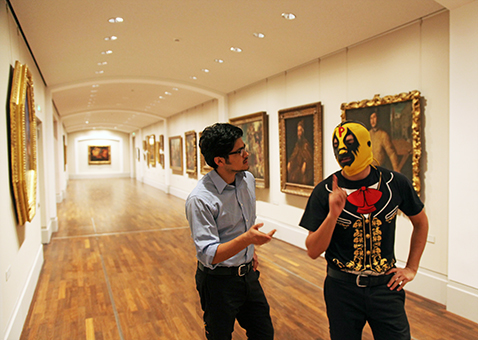Crazy Talk: A Conversation On Art & Mental Illness

Jovanny Varela Ferreyra: Oh piss off!
Pancho Panoptes: I’m serious. As much as the art world is regarded as a cultural center in our society, it could very well be the world’s largest mental institution.
JVF: [laughs] What?!
PP: Artists who think they still have a place in the 21st century must be, by all practical means, crazy. And people who think that the 21st century can breed sane artists must be crazy as well.
[Pause]
Before continuing this conversation, let me bring it into context. After my past Op-ed on art and suffering, I wanted to expand the conversation into the topic of mental illness and its relationship to creativity and art. History tells us that some of our most beloved artists have suffered from mental illnesses. Think Goya, Caravaggio, Dalí, or the epitomized Van Gogh. After all, isn’t this part of the reason why the myth of the tortured artist ever carried any weight? Isn’t it also why we often expect artists to be a bit “crazier” or more weird than the rest of society?
Being keenly interested in this relationship and not sure how to approach this Op-ed, I began speaking about it with friends and colleagues. Conversations ranged from the latest discoveries in neuroscience to the most abstract concepts of defining mental illness. But it wasn’t until I struck up conversation with Pancho Panoptes, an artist and colleague of mine, that a structure for this article began to appear.
Pancho has been pointed at, more often than not, as being one of these stereotypically “crazy” artists ever since he made his first appearance on the art scene. Now, without making assertions about his current state of mind, let’s simply assume these allegations come from his choice to live his life under a luchador’s mask (we'll leave his reasons for another day). While this certainly doesn’t make him an expert on the subject, it did make for a first great initial conversation on the aforementioned topic. Here is a transcript of our conversation, which we decided to expand–for both practical and aesthetic purposes–at Gemäldegalerie in Berlin.
Resuming The Conversation
JVF: But when I say crazy I mean the literal definition. I’m talking about schizophrenia, bipolar and personality disorders, etc.
PP: And I’m defining crazy as that which is illogical. Same thing. It all depends on who is doing the evaluation, doesn’t it?
JVF: Are you saying craziness is relative?
PP: Look, for example, at all these paintings around us by the Old Masters. Most of them carry explicit religious imagery: angels, demons, depictions of heaven and hell, etc. On the one hand, I wonder how much of these images were metaphors for the artists who painted them and, on the other, how much they were their honest beliefs on the way reality functions.

JVF: I think I see what you mean. But how does that tie to mental illness?
PP: That to some people—certainly more now than in the past—these depictions, albeit beautifully constructed, appear illogical. Yet, in somebody else’s eyes they might resonate as truth (one that may happen in another dimension, since we certainly don’t see angels and demons in the everyday). But my point is: what may appear crazy to some is not crazy to others. What the art-world conveniently does, however, is offer a sort of safe-space to social outcasts and “crazy” individuals in which they could freely act upon their drives. Have you noticed?
JVF: I’m looking straight at you.
[We both laugh]
Be the first to write a comment.
Your feedback
